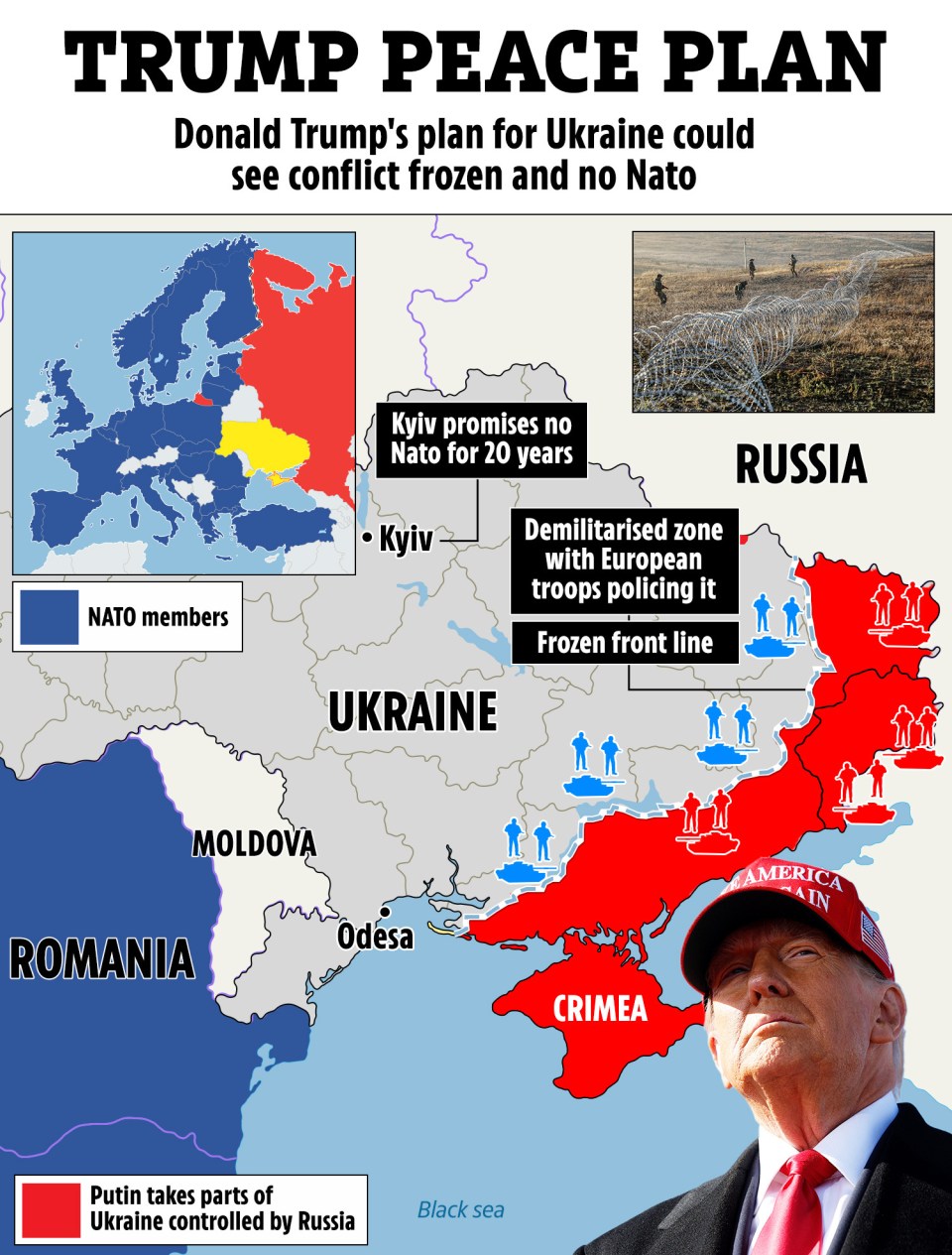Geopolitical Showdown: A US Military Base And The China Challenge

Table of Contents
The escalating tensions between the United States and China are reshaping the geopolitical landscape, with US military bases in the Asia-Pacific region at the epicenter of this intensifying rivalry. This article delves into the strategic importance of these bases, China's assertive military expansion, and the potential for future conflict. Understanding this complex geopolitical showdown is crucial for navigating the challenges ahead and formulating effective strategies for regional stability.
The Strategic Importance of US Military Bases in the Asia-Pacific Region
US military bases in the Asia-Pacific are not merely installations; they are critical components of a broader strategy to maintain regional stability and counter China's growing influence. These bases provide essential logistical support, advanced intelligence-gathering capabilities, and the capacity for rapid response to regional crises. Their strategic placement allows for the projection of power, deterrence of aggression, and swift intervention when necessary.
-
Guam's Role: A Pivotal Forward Operating Location: Guam's geographical location is paramount. Its proximity to potential conflict zones in the South China Sea and East China Sea, combined with its substantial air and naval capabilities, makes it a crucial forward operating base. This allows for rapid deployment of forces and provides vital logistical support for regional operations, solidifying its role as a cornerstone of US defense strategy in the Pacific. The island's infrastructure supports a significant military presence, enabling quick responses to emerging threats.
-
Other Key Bases and Their Significance: Beyond Guam, bases in Japan (including Okinawa and Yokota Air Base), South Korea, the Philippines, and Australia play equally vital roles. These strategically located bases enable the US to project power, deter aggression, and respond to crises across a wide geographical area. Their combined presence serves as a significant check on China's expanding influence and strengthens the US's commitment to regional security.
China's Growing Military Might and Assertiveness in the South China Sea
China's rapid military modernization and increasingly assertive actions, particularly in the South China Sea, are key factors driving the escalating tensions. This includes substantial investment in naval and air power, and the development of advanced Anti-access/Area Denial (A2/AD) capabilities designed to restrict the movement of adversaries.
-
Island Fortifications and Militarization: China's extensive creation of artificial islands and their subsequent militarization in the South China Sea represents a significant shift in regional power dynamics. These installations, equipped with advanced weaponry and surveillance systems, enhance China's ability to control access to vital shipping lanes and project power throughout the region, challenging established norms of international maritime law.
-
Economic and Diplomatic Pressure Tactics: China's strategy extends beyond military might. Economic and diplomatic pressure tactics are employed to advance its interests. Initiatives like the Belt and Road Initiative are used to expand influence and foster economic dependence, while trade disputes and economic coercion are leveraged to pressure other nations. China's sophisticated diplomatic maneuvering, including the forging of strategic alliances, further complicates the geopolitical landscape.
The Escalation of Tensions: Potential Flashpoints and Scenarios
Several potential flashpoints could rapidly escalate tensions into open conflict, demanding careful consideration and proactive diplomatic efforts.
-
Taiwan Strait Crisis: A Potential Hotspot: The unresolved status of Taiwan, coupled with China's claim of sovereignty and the US commitment to Taiwan's self-defense, remains a highly volatile issue. Any perceived threat to Taiwan could trigger a major military confrontation with potentially devastating global consequences. This scenario necessitates clear communication and carefully calibrated responses to prevent escalation.
-
South China Sea Disputes: Navigational Freedom and Resource Control: Competing territorial claims in the South China Sea, combined with disputes over freedom of navigation and access to vital resources, create a volatile environment prone to miscalculation and escalation. Freedom of navigation operations (FONOPs) conducted by the US Navy, while asserting international law, often heighten regional tensions and necessitate a delicate balancing act.
US Responses and Strategies to Counter China's Growing Influence
The US is actively employing a range of strategies to counter China's growing influence and mitigate the risks of conflict. This includes strengthening alliances, modernizing military capabilities, and engaging in proactive diplomacy.
-
Strengthening Alliances and Partnerships: The US is actively strengthening its alliances and partnerships in the region through initiatives like the Quadrilateral Security Dialogue (Quad) – involving the US, Japan, Australia, and India – and the AUKUS agreement between the US, UK, and Australia. These collaborations, coupled with increased military exercises and joint operations, aim to enhance regional cooperation and present a united front against potential aggression.
-
Modernizing Military Capabilities: Significant investment in advanced weapons systems, including hypersonic weapons and next-generation fighter jets, is crucial for maintaining a credible deterrent against Chinese aggression. Equally important are investments in cybersecurity and information warfare initiatives to protect against potential cyberattacks and disinformation campaigns. Improved intelligence gathering capabilities are also essential for accurately assessing the evolving threat landscape.
Conclusion: Navigating the Geopolitical Showdown: The Future of US Military Bases and the China Challenge – A Call to Action
The geopolitical showdown between the US and China is a multifaceted and dynamic challenge requiring a nuanced and adaptable approach. The strategic importance of US military bases in the Asia-Pacific region cannot be overstated, but maintaining regional stability necessitates a delicate balance between military deterrence and diplomatic engagement. Understanding the strategic implications of these bases within this complex geopolitical context is crucial. Continued research, informed public discourse, and collaborative international efforts are essential to effectively navigate this "Geopolitical Showdown: A US Military Base and the China Challenge" and prevent future conflict.

Featured Posts
-
 Trumps Ukraine Peace Push Russia Emerges As Unexpected Roadblock
Apr 26, 2025
Trumps Ukraine Peace Push Russia Emerges As Unexpected Roadblock
Apr 26, 2025 -
 The Newsom Democrat Rift Analyzing The Governors Recent Actions
Apr 26, 2025
The Newsom Democrat Rift Analyzing The Governors Recent Actions
Apr 26, 2025 -
 Were We In Nepo Hell Oscars After Party Highlights Hollywoods Nepotism Problem
Apr 26, 2025
Were We In Nepo Hell Oscars After Party Highlights Hollywoods Nepotism Problem
Apr 26, 2025 -
 Point72s Departure A Close Look At The Emerging Markets Funds Closure
Apr 26, 2025
Point72s Departure A Close Look At The Emerging Markets Funds Closure
Apr 26, 2025 -
 Indonesia Weighs Rare Rice Exports To Strengthen International Relations
Apr 26, 2025
Indonesia Weighs Rare Rice Exports To Strengthen International Relations
Apr 26, 2025
